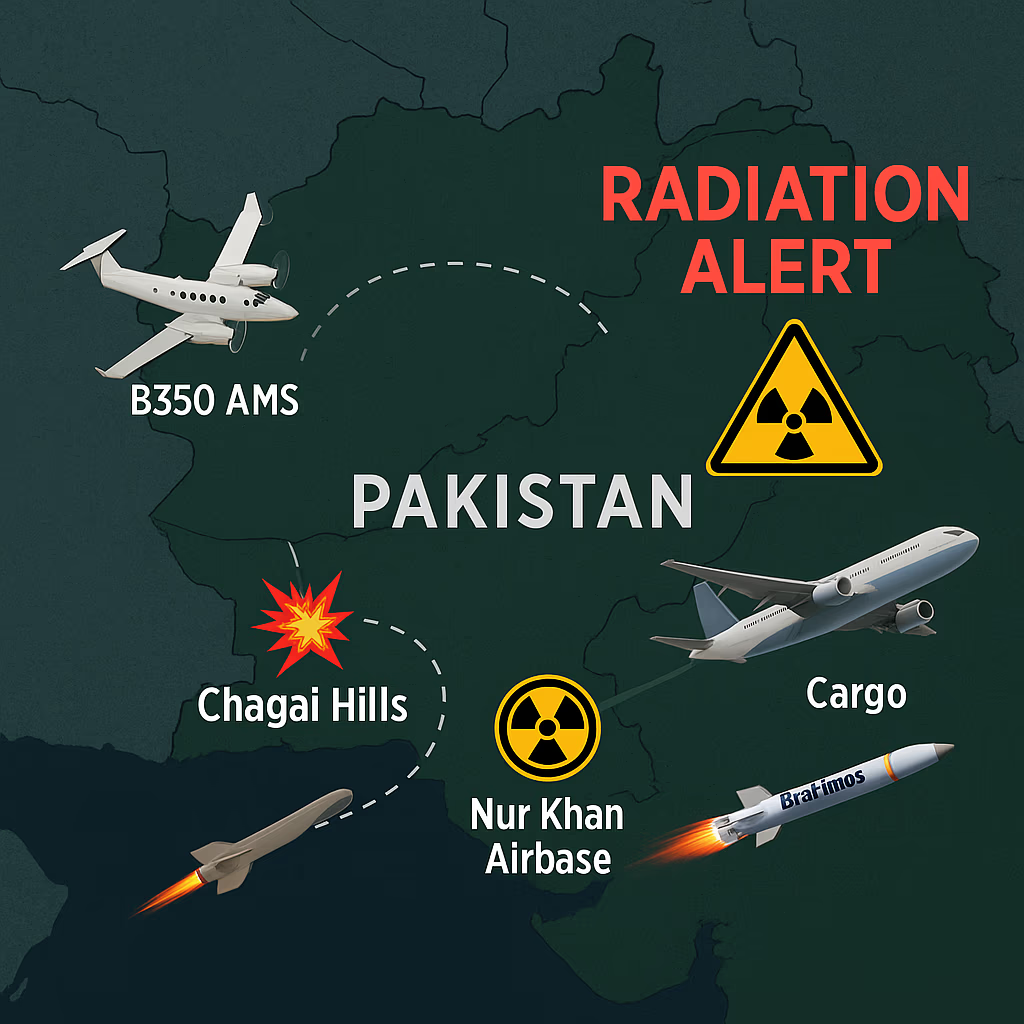Operation Sindoor:
On the night of May 10, did an earthquake occur near the Afghan border at Pakistan's Chagai Hills? Was there an attack on nuclear sites near Nur Khan Airbase in Pakistan? This question arises because two aircraft, designed to detect and reduce radiation, were observed circling within Pakistan's borders on May 10. Let's uncover the full narrative.
India Unshaken by Nuclear Threats
The world knows both India and Pakistan are nuclear-armed nations. With nuclear bombs at their disposal, the gravest threat during a conflict between such nations is the initiation of nuclear war. Pakistan frequently brandishes its status as a nuclear power, often threatening with nuclear capabilities via its government and military officials. Now, the question is, why did Prime Minister Narendra Modi warn Pakistan post-ceasefire that India will not be intimidated by their nuclear threats? The answer lies within connections not only to Pakistan's nuclear weapons but also this ceasefire.
Earthquake or Nuclear Test?
In the early hours of May 10, we felt tremors around Chagai Hills near the Afghan border. The seismic intensity registered at 4 on the Richter scale. About 16 hours later, U.S. President Donald Trump announced via Twitter the unexpected ceasefire between India and Pakistan. The agreement was effective from 5 PM on May 10. Speculation arose whether those tremors were genuinely seismic activities or whether Pakistan conducted a secret nuclear test or faced an attack on their nuclear facilities.
Attack on Pakistan's Nuclear Sites
Following disturbances at Chagai Hills, India purportedly launched rapid attacks on various Pakistani airbases on May 10, causing significant damage, particularly to the Musaf and Nur Khan Airbases. Both hold substantial importance for Pakistan, with Musaf being an essential nuclear base and Nur Khan considered the backbone of its nuclear capabilities.
Damage to Pakistan's Nuclear Weapons
Post-attack, around 8 AM, Pakistan's Prime Minister Shahbaz Sharif convened an emergency Nuclear Command Authority meeting to assess the extent of damage, especially to the Nur Khan base, sparking reports that their nuclear arsenal suffered damage. If nuclear weapons incur damage, radiation is inevitable, fueling speculation further with emerging imagery of potential nuclear weapon damage.

Source: aajtak
U.S. Aircraft Conducts Aerial Survey
The first image is of the U.S. Department of Energy's B350 AMS aircraft. Available tracking data on Flight Radar 24 shows this plane circling Pakistani skies, raising suspicions of radiation near Nur Khan. The aircraft's main task involves radiation tracking, aligning with its name as an Aerial Map Survey component.
Egyptian Cargo Plane Dispenses Chemicals
Another image on May 10 highlights an Egyptian cargo aircraft that discreetly entered Pakistan. Reports suggest it transported boron, used in nuclear plant security and repair, further evidenced by its erratic flight pattern on Flight Radar 24, unlike usual straightforward flights. Experts believe chemical dispersal occurred over Nur Khan to control radiation. Boron, abundant in Egypt's Nile River, is the deployed agent.
India Denies Any Invasion
Despite global discussions on significant damage to Pakistan's nuclear arsenal post-attack, India firmly denies targeting any nuclear infrastructure under 'Operation Sindoor'. India contends the aerial strikes solely aimed at military targets and airbases.
Distribution of Nuclear Weapons
India's strikes involved BrahMos missiles, reputed for speeds thrice that of sound, eluding radar detection. Nuclear-armed nations like India never house their arsenal in unity, maintaining them separately for security.
Potential Nuclear Attack from Pakistan
Pakistan stores nuclear potential disjointly across distinct sites. Fusion cores, akin to a bomb's key forming raw materials, stay separately. When bombs complete, they are precisely deployed by carriers. Possessing carriers such as trucks or heavy vehicles on land and aviation fighters, Pakistan, however, currently lacks sea-based strike capabilities, unlike India capable of launching missiles from submarines.

Source: aajtak
Consensus on Ceasefire
After attacks on Nur Khan, near a critical nuclear site in Nilore, Pakistan, worried of tangible nuclear facility threats, reached out to the U.S. for ceasefire persuasion with India. Following repeated U.S. communication, both nation’s military operation heads agreed upon the ceasefire.
Fears of Terrorist Seizure on Nuclear Sites
With emerging reports of impaired nuclear sites, concerns rose over potential terrorist seizures. Pakistan's Nuclear Command Authority remains an enduring concern, with documented U.S. intentions to gain backdoor control compelling stricter safety comparisons with India's well-regarded Nuclear Command Authority, advocating a no-first-use policy with its nuclear arsenal.
Pakistan's Arsenal of 170 Nuclear Weapons
According to the Bulletin of Atomic Scientists, Pakistan harbors 170 nuclear warheads with only 36 deployable by fighter planes. They possess Mirage 3 and Chinese JF-17 to transport and deploy these warheads.
Lack of Sea-Based Nuclear Attack Capability
Apart from deployable airborne weapons, Pakistan's remaining arsenal is predominantly land-based. Current sea-based developments remain in trial phases. Airbase capabilities for aerial nuclear operations include five specific bases: Nur Khan, Minhas also known as Kamra, Shahbaz, Rafique, and Masroor. Ground deployments rely on five key stations: Sargodha Army Camp, Khuzdar, Gujranwala, Pano Akil, and Arko Army Camp.
Despite 40 airbases, not every location supports nuclear deployment. Attack on Nur Khan, the nuclear program's backbone, led to Pakistan conceding into a ceasefire.




